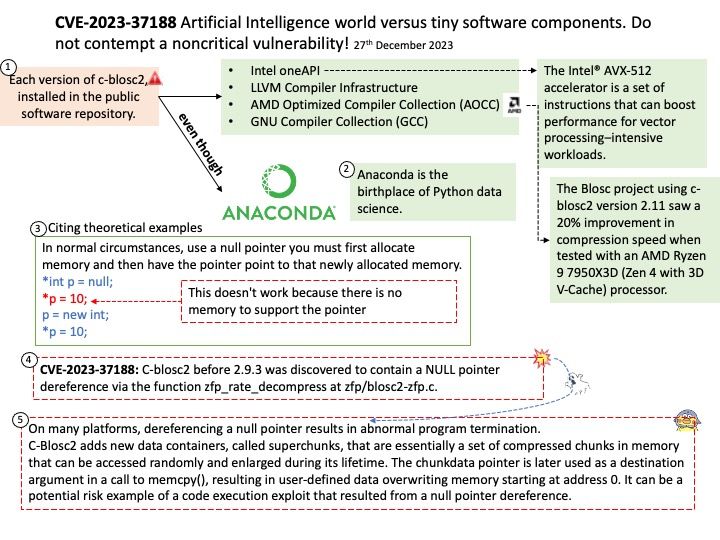
Preface: Data science is an interdisciplinary field that combines statistical analysis, programming, and domain knowledge to extract valuable insights and make data-driven decisions.
Background: 2020 has been a year in which the Blosc program has received significant donations, totalling $55,000 to date. The most important tasks carried out between January 2020 and August 2020. Most of these tasks are related to the fastest projects under development: C-Blosc2 and Caterva (including its cat4py wrapper).
C-Blosc2 is the new major version of C-blosc, and it provides backward compatibility to both the C-Blosc1 API and its in-memory format.
C-Blosc2 adds new data containers, called superchunks, that are essentially a set of compressed chunks in memory that can be accessed randomly and enlarged during its lifetime.
Vulnerability details: C-blosc2 before 2.9.3 was discovered to contain a NULL pointer dereference via the function zfp_rate_decompress at zfp/blosc2-zfp[.]c.
My observation: On many platforms, dereferencing a null pointer results in abnormal program termination.
C-Blosc2 adds new data containers, called superchunks, that are essentially a set of compressed chunks in memory that can be accessed randomly and enlarged during its lifetime. The chunkdata pointer is later used as a destination argument in a call to memcpy(), resulting in user-defined data overwriting memory starting at address 0. It can be a potential risk example of a code execution exploit that resulted from a null pointer dereference.
Official announcement: Please refer to the link for details – https://nvd.nist.gov/vuln/detail/CVE-2023-37188